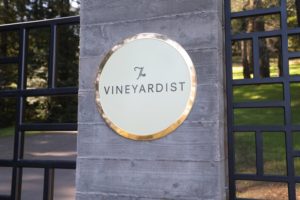

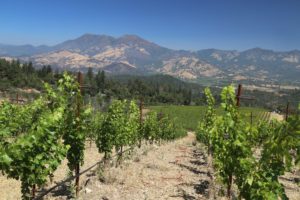 The Vineyardist is one of those rare historical properties within Napa Valley that often fly under the radar. The original vineyards on site were planted in the early 1880s; the story begins with a Danish shipping captain by the name of Lorenz (Lorenzo, Lawrence) Petersen (1843-1915). He left his country in the mid 1860s to avoid joining the German army. He first came to California in 1867 and settled in San Francisco. He eventually made a small fortune from the shipping building industry but promptly lost nearly all of it in the stock market during the financial crisis known as The Panic of 1873. This crisis came about because of a decreased international demand for silver.
The Vineyardist is one of those rare historical properties within Napa Valley that often fly under the radar. The original vineyards on site were planted in the early 1880s; the story begins with a Danish shipping captain by the name of Lorenz (Lorenzo, Lawrence) Petersen (1843-1915). He left his country in the mid 1860s to avoid joining the German army. He first came to California in 1867 and settled in San Francisco. He eventually made a small fortune from the shipping building industry but promptly lost nearly all of it in the stock market during the financial crisis known as The Panic of 1873. This crisis came about because of a decreased international demand for silver.
He also built bridges for the Southern Pacific Company in Napa Valley, the same company that would later purchase the Napa Valley Railroad in 1885.
Lorenz and his wife Maria, who he married in 1869, took $2000 that he fortunately had not deposited, moved north and purchased 160 acres on what is now Diamond Mountain in 1879. At the same time, he built a sturdy and gorgeous Victorian home (still standing). Despite losing a fortune in the market, $2000 was still a lot of money back then. He later purchased another 120 acres.
Lorenz planted a number of trees including apples, peaches, cherries and apricots and also a number of wine grapes, with varieties that were popular in those days – often called “mixed blacks” or field blends. Alicante, Petite Sirah and Zinfandel were grown among others. His first vintage was from 1884. Wine brokers would make the trip up to his property by train from San Francisco – taste through his wines and then buy casks on the spot. The barrels were shipped back to San Francisco on the train which in those days operated all the way to Calistoga, and then were sold to those who bottled it under their custom label.
Wine production ceased by 1919 (as most production did in Napa Valley with the onset of Prohibition) and eventually the vineyard blocks were converted over to walnuts and prunes. The original winery no longer exists; it stood on site of what is now their swimming pool. 40 acres of the original ownership later became known as the Calarcadia Ranch or often referred by Calistogans as the Petersen Ranch.
Lorenz’s son Christopher (C.L.) Petersen was only 7 when he moved to the ranch with his parents in 1879. He attended Napa College with a $50 stipend from his father Lorenzo in the early 1890s and later graduated with a Master’s Degree from Boston College. And he became a Methodist minister (Reverend) including preaching at Grace Church in Oakland and later helping re-establish the Methodist Church in Calistoga. He returned to live on the ranch full time following his father’s death in 1915, to care for his mother and also replant the vineyards with orchards in subsequent years.
He was very involved in the local community including as the head of the Calistoga Cemetery Association and the Napa County Tax League.
C.L. married his first wife Lulu (Lindsey) in 1901; she was a teacher, a published writer and an authority on the petrified trees at the Petrified Forest in neighboring Sonoma County. Tragically she died far too young in 1924 at their home on the property. A year later he married his second wife Mabel (Martin), a nurse; Mabel was operating Calistoga Hospital at the time, now home to The Francis House. He was still living on the ranch in 1962 when he celebrated his 90th birthday. He passed away the next year. Mabel lived another 20 years, passing on at the St. Helena Hospital.
The ranch produced a variety of products for sale for decades. According to an advertisement that C.L. placed in The Weekly Calistogian dated Friday January 18, 1924, he was operating the ranch as a nursery and selling a diversity of fruit tree stock including prunes, pears, apples and walnuts. In the 1950s and early 1960s, he would often post classified ads in the local newspaper advertising juicy Valencia oranges and mountain grown chestnuts.
The Francis House was named for prominent local businessman James Harvey Francis and was built in 1886 as Second French Empire Architecture – the architect of record was John Sexton. The stone was quarried from a ranch just south of Calistoga owned at the time by an Ed Brown. According to an article in the Napa Register dated Friday October 23, 1885, “five teams were engaged the hauling of the rock for J.H. Francis’s new home being constructed on the corner of Myrtle and Elm Streets”. The same article also indicated, “It is possible for Calistoga to become as noted as Milwaukee is now for her brick”. Rock from this quarry was also used to build a retaining wall next to bridge on Lincoln Ave over the Napa River. Plans were also in place for a local business, M. Friedberg & Son to also pull rock from this same quarry to build a new store on Main Street.
Gravesite, Lorenz Peterson – Calistoga, Pioneer Cemetery
Unfortunately, Francis only had a few years to enjoy the stately structure; he passed away in 1891 inside the home. His death was the first of many individuals to pass away in the building, taking into account normal hospital operations. Francis operated businesses in St. Helena in the 1860s and 1870s before permanently moving to Calistoga in 1874 where he operated a general mercantile store on the north west corner of Lincoln Ave and Washington Street, selling a variety of daily household goods, men’s clothing, mining tools as well as assorted provisions including groceries and dry goods. He also owned several ranches in the northern part of Napa Valley including one that was producing cinnabar ore. His obituary listed in the The Weekly Calistogan dated Wednesday January 7, 1891 mentions, “he knew just two places – his store and his home”. He is buried in the St. Helena Cemetery.
One of his brothers, George M. Francis, was owner of The Napa Register newspaper in the City of Napa.
One of our greatest regrets in Napa Valley was never photographing the inside of the structure before its restoration, despite having ample opportunities to do so.
His former home transitioned to the Calistoga Hospital in 1918 when Mabel, a nurse rented out the building. During she and C.L.’s ownership of of the hospital, they expanded operations and added wings on each side of the original house. It served the local community until a number of its operations closed down in 1964 although it continued to service convalescents and elderly needs for about another year. A number of winemakers were born here including one of our friends who owns a winery in Calistoga. It was listed on the National Register of Historic Places in 1979. It was abandoned and uninhabited for decades until Dina and Richard Dwyer purchased the property in 2018 and fully restored it. They opened the Francis House in 2018, a luxury bed and breakfast; a year later it was listed as one of the Best New Hotels in 2019 by Travel & Leisure Magazine. The Dwyer’s sold Francis House in November 2024 to Anthony Edwards Luxury Estates.There is an adage that makes sense in almost every case; it refers to once you sell your farm or ranch you will never get it back. However the opposite occurred for the Petersen family. In the 1920s Peterson sold his ranch and he and Mabel moved into Calistoga. But he missed the emotional connection of a property which by this time had already been in his family for more than 40 years. Other than 2 years when she leased the space out to care for her ailing mother, after nearly three decades years of operating Calistoga Hospital, Mabel sold the facility in 1947 and they purchased the ranch back – albeit at a higher price than what it had sold for.
The Francis House, Calistoga (original Calistoga Hospital owned by Mabel Petersen)
From 1956 until 1963 when he turned 95 years young, Dr. Rockwell Hunt lived on the property. Hunt also coined the name Calarcadia and California the Golden, the name of one of his books. He was C.L.’s professor at Napa College and the two men became close friends, a friendship that lasted the rest of their lives. In the early 1890s he taught history at Napa College. He earned the nick name, “Mr. California” in 1954 by the governor of California at that time, Goodwin Knight. He wrote 15 books on the history of California during his career including his last book while living at Calarcardia, titled: The Boyhood Days of Mr. California. He passed in 1966 at age 97.
In 1966, C.L.’s widow Mabel sold 40 acres to Paul and Homer Mcomish of San Francisco, but kept the rest of the ranch, totaling 240 acres. Milton Petersen was the 3rd generation of the Peterson family to live on the property. In the late 1970s he and his wife Vera developed the historic Calistoga Depot before selling it in 1987, a year before his passing.
In the mid 1980s the property was associated with The French School and French teacher, Claire Vandendriessche – who is also the co-founder of White Rock Vineyards.
From 1993 until 2002, the property was known as Lazy Susan Ranch. It was a commercial herb farm founded by Linda-Marie Bauer (also last names of Loeb & Koza). Originally from Houston, she purchased and moved to the property in 1993; at the height of its operations she was cultivating 10 acres all organically farmed, which was producing over 100 different varieties of unusual herbs and edible flowers, supplied to various restaurants in Napa Valley and other parts of Northern California. For example, some of the specialty herbs growing here included Korean shisho, Mexican tarragon, Vietnamese cilantro, wild purslane and red amaranth.
Farming at the ranch followed the Italian coltivazione promiscua philosophy, featuring inter-plantings of herbs, perennials and fruit trees. They produced their own herb-infused olive oil. And in addition to the herb gardens, the ranch was also planted to Cabernet Sauvignon.

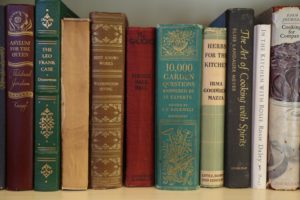
 Several local restaurants still in business which used produce from the property were The Restaurant at Auberge du Soleil, Bouchon and La Toque. And she sold to Greenleaf Produce, a still operating specialty high end and organic produce supplier based in the San Francisco Bay Area. Co-owner of Napa Valley’s Gargiulo Vineyards, Jeff Gargiulo was a majority investor in this company.
Several local restaurants still in business which used produce from the property were The Restaurant at Auberge du Soleil, Bouchon and La Toque. And she sold to Greenleaf Produce, a still operating specialty high end and organic produce supplier based in the San Francisco Bay Area. Co-owner of Napa Valley’s Gargiulo Vineyards, Jeff Gargiulo was a majority investor in this company.
Linda-Marie would host workshops about growing herbs, garden tours and offered culinary classes from the kitchen within the old house. For a while, the farm featured U-pick Sundays. And during her ownership, the property hosted a guided tour by the Napa Valley Master Gardener’s.
Linda-Marie also was co-owner of The Moa Room in San Francisco and some of the herbs from the Lazy Susan Ranch were also supplied to that restaurant. She was also a Master Gardener for the U.C. Cooperative Extension.
The herb farm received a variety of publicity over the years. In October 2000 chef Alain Ducasse released a book called, Harvesting Excellence: America’s Top Food Producers. The Lazy Susan Ranch was featured as one of the top food producers in this book. In January 2002, KRON aired a cooking show titled, Bay Cafe which was filmed at the ranch. In June 2002 the ranch and herb garden were featured on hosts Torie Ritchie’s, Food Network special, Tasting Napa.
In 2000, husband and wife, Dirk Fulton (lawyer and real estate investor) and Becky Kukkola purchased the property after a 10-year search for the ‘right’ site in Napa Valley. They hired noted winemaker Mark Herold; incidentally, this was Mark’s first Cabernet Sauvignon project after he sold his own brand, Merus. And vineyard manager Jim Barbour planted the first vines under their ownership.
Their initial purchase were three separate parcels for a total of 120 acres; seven acres were initially planted to vines and later 17 more acres were added. And in 2024 the Fulton’s acquired an additional 63 acres from an adjacent parcel. Today 24 acres of vines, organized into 20 distinctive blocks, are farmed organically and range in elevation from 800 to 1300 feet; much of this is planted to Cabernet Sauvignon. The initial seven acres were planted to four unique blocks, two of which are planted on the exact same footprint as the original plantings. Dirk and Becky are avid skiers; several of their blocks are named after ski runs at Lake Tahoe ski resorts. In 2025 a small block of Cabernet Sauvignon was grafted over to Chardonnay at an elevation of around 940 feet.
Much of the property is a “rockpile” and the vines really struggle to grow here. There are a number of soil types on the property – much of which is volcanic (rhyolite). Their yields are fairly tiny as one would expect from this site – often merely 1.5 tons per acre. In 2024 plans were announced to drill a 7,500 foot cave on the property.
Beginning in 2017 all their wines are exclusively from the estate including a small production of Sauvignon Blanc blended with Sauvignon Blanc Musqué. Initially the Vineyardist focused on one estate wine each year – a 100% varietal Cabernet Sauvignon from two Cabernet Sauvignon clones, but today they produce four red wines. The first vintage was from 2004, however each vintage from 2004 to 2008 was never released. With high standards for quality and wanting to wait until the vines reached full maturity, both Dirk and Becky decided it was best to hold back these vintages from commercial production.
As a result, their 2009 vintage was the first release to market. Less than 400 cases were made of this vintage with even smaller subsequent productions. Each Cabernet Sauvignon clone is fermented and aged separately until the final blend is created. The wine is aged in nearly all new French oak barrels, with the primary coopers including Taransaud, Darnajou and Demptos.
Select Wines
Sauvignon Blanc
The 2024 The Vineyardist Sauvignon Blanc; this wine is an approximate 50% blend of Sauvignon Blanc and 50% Sauvignon Musqué. It is medium straw in color; highly floral, the bouquet offers aromas of jasmine, honeysuckle, with additional stone fruits and tropical notes including of apricot jam, yellow nectarines, yellow peach, lychee and glazed pineapple. The bouquet smells ripe but also bright. As the wine evolves it opens to a layer of vanilla. Compelling and highly layered, this is a fun wine to smell and hard to pull away from. The palate mimics the bouquet to some extent with flavors of pineapple, pear in light syrup, golden delicious apple, nectarines, gooseberry, and golden kiwi. Finishes vibrant and flavorful, but also with present texture; the mouth feel offers a creamy and supple viscosity. This weight is balanced by its rich and bright acidity. From personal experience, this wine goes particularly well with an aged gouda. This beauty should be given a seat at the table for a tasting of some of Napa Valley’s most premium Sauvignon Blanc bottlings.
Lazy Susan Ranch
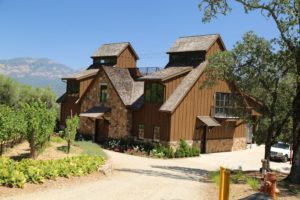

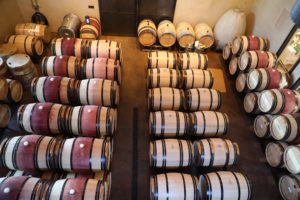 The 2022 The Vineyardist Cabernet Sauvignon, Lazy Susan Ranch; this wine is deep ruby and opaque. Both black and blue fruit dominate, the bouquet is a comfortable union of fruit and barrel influences. This wine smells like dark cherry, blackberry, boysenberry, blueberry, old cigar box and light note of smoked cedar. As the wine opens, the barrel influences become more noticeable with aromas of graham cracker, mocha and assorted baking spices. On the palate there are flavors of dark cherry, blackberry, boysenberry, Himalayan purple mulberry and dark plum. This wine feels gentle in terms of its texture; the plush and sweet tannins linger with lightly rounded cadence. The one word we first thought of to describe their feel on the finish is seamless. This wine is predominantly See clone (clone 30) from the upper part of the estate. This bottling is easy and enjoyable to drink in its youth.
The 2022 The Vineyardist Cabernet Sauvignon, Lazy Susan Ranch; this wine is deep ruby and opaque. Both black and blue fruit dominate, the bouquet is a comfortable union of fruit and barrel influences. This wine smells like dark cherry, blackberry, boysenberry, blueberry, old cigar box and light note of smoked cedar. As the wine opens, the barrel influences become more noticeable with aromas of graham cracker, mocha and assorted baking spices. On the palate there are flavors of dark cherry, blackberry, boysenberry, Himalayan purple mulberry and dark plum. This wine feels gentle in terms of its texture; the plush and sweet tannins linger with lightly rounded cadence. The one word we first thought of to describe their feel on the finish is seamless. This wine is predominantly See clone (clone 30) from the upper part of the estate. This bottling is easy and enjoyable to drink in its youth.
The 2015 The Vineyardist Cabernet Sauvignon Lazy Susan Ranch is highly appealing in its youth – dessert in the glass if you will, with aromas of ripe plum, blackberry, chocolate, cinnamon and other baking spices. Shows plenty of fruit on the palate, while it is surprisingly balanced for such a young wine; for reference our tasting was 3 years post vintage. The palate features a lively acidity and a long finish with noticeable but not overly gripping tannins.
Notre Mystere
The 2022 The Vineyardist Cabernet Sauvignon, Notre Mystere is deep ruby and opaque with an amaranthine rim; its non fruited scents are initially floral with notes of lilac, African violets and lavender. Additional scents are of chalk, sage, cigar box, sweet pipe tobacco, dried sage and smoked cedar. And its fruit includes dark raspberry, boysenberry, Santa Rosa plum, blackberry and Persian mulberry. Delicious, with a hedonistic play, this wine brings plenty of ripe fruit and layers to the table. It tastes like blackberry, boysenberry, dark plum, and dark mulberry. The palate is a union of ripe fruit, a soft and balanced acidity and gravelly but already well integrated tannins. And a persistent lightly dusty character. Its plushness is perhaps a result of the warmth and heat of this particular vintage. This wine is a blend of 66% Cabernet Franc and 34% Cabernet Sauvignon; both varieties are co-fermented together. Each year their percentages change. Notre Mystere is French for ‘our mystery’, a reference to the ‘mysteries’ associated with each harvest.
Calarcardia
The 2022 The Vineyardist Cabernet Sauvignon Calarcardia is 100% varietal; the grapes in this wine are from the Promised Land blocks, a plateau with two blocks located about mid point in elevation on their property. This wine is deep ruby and opaque; ripe and dark fruited, the bouquet smells like Satsuma plum, dark cherry, boysenberry, blackberry and pipe tobacco. Hedonistic and mouth filling, the wine features a pronounced intensity of ripe fruits. The first flavor we noted is of ripe blackberry, a flavor that reminds us of mid summer as a child picking these fruits at the peak of ripeness. Additional flavors mimic the palate including dark cherry, blackberry pie, boysenberry jam and dark mulberry. The bright acidity helps temper the riper cadence of this bottling. And the tannins show some mountain grip, but are still well tumbled and resolved at only 3 years post vintage. Their texture lingers with drying and dusty chalky tug, ultimately outpacing the fruit on the finish. A steak wine. Wagyu or rib eye and a BBQ please.
Estate Cabernet Sauvignon
The 2011 Vineyardist Estate Cabernet Sauvignon initially shows an opulence and brightness of fruit on the bouquet; as it breathes, the bouquet opens to a variety of other aromas including a savory sage like charachter, old cedar box, hints of white pepper and tobacco leaf. On the palate the wine is medium to full bodied. Superbly balanced – the finish is lively and lingers with fairly fine-grained tannins. One immediately notices the well-integrated structure. This wine is a testament to the beauty of this particular often maligned vintage by some in the wine writing world. It was a colder year than normal in Napa Valley with rain during parts of harvest. However, one can carefully select excellent wines from this vintage based on specific sites – with certain hillside locations producing balanced, very age-worthy and more restrained wines then in a ‘normal’ year. Their site is one of these.
The 2009 The Vineyardist Estate Cabernet Sauvignon is dark and aromatically shows a pleasing vibrancy in the glass – offering ripe blackberry, black currant and cedar notes. As the wine opens more influence of the oak shows including a vanilla, similar in aroma to a cream soda. Mineralities and notes of graphite hang out more in the background as the wine continues to evolve in the glass. As it breathes there is less influence from the oak on the bouquet; the bouquet becomes more elegant. The palate is all about the vineyard’s well managed mountain fruit and the integrated tannins anchoring the pleasing finish are a testament to this. Notes of vanilla linger delicately. This wine brings both power and finesse to the bottle – power in terms of fruit and finesse in terms of structure. This wine holds up well after it has been opened.
—
Prior General Manager Roy Piper (who we originally met with during our first visit to the property) spoke of a renaissance of sorts for Diamond Mountain. It was a region that was especially hit hard with phylloxera in the 1980s and often replants in the 1980s and early 1990s were on rootstalks and clones that were not necessarily optimal for this region’s terroir.
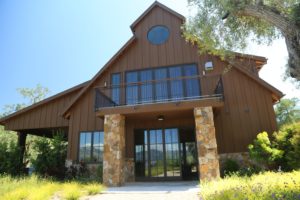

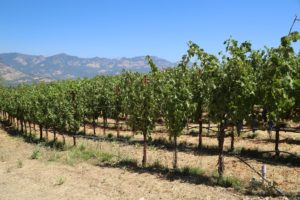 The name is a tribute to their properties’ history – wine brokers were referred to those who grew grapes and made wine, not as vintners as today, but as a “vineyardist”. Because there was a winery on the property the estate was grandfathered in with an existing winery bond. The first several vintages were produced at a winery in the southern part of Napa Valley; however, a modern state of the art winery has since been built on the lower part of the property.
The name is a tribute to their properties’ history – wine brokers were referred to those who grew grapes and made wine, not as vintners as today, but as a “vineyardist”. Because there was a winery on the property the estate was grandfathered in with an existing winery bond. The first several vintages were produced at a winery in the southern part of Napa Valley; however, a modern state of the art winery has since been built on the lower part of the property.
This part of Napa Valley is somewhat of a banana belt and remains relatively frost free during the winter months. We have personally seen several large avocado trees growing in this part of Diamond Mountain as well as on the nearby Sonoma/Napa County line nearby. The property is home to several thriving Kaffir lime trees, the leaves often used in Thai curries and soups while the fruits sometimes used in shampoo and beautiful lavender and herb gardens. While temperatures are generally warmer in the winter than the valley floor, it is typically slightly cooler than the valley floor during the summer months. The property benefits from a gap that runs through the Mayacamas mountains in this part of Diamond Mountain allowing cooler air to flow from the west, especially in the afternoons.
The primary gap runs slightly south of the property and in an east/west orientation and during warm summer afternoons, cool breezes flow from Sonoma County through a sub channel of this gap and flow directly over their vineyards (certainly helps mitigate powdery mildew). In general, the micro-climate of this particular site produces moderate temperatures which helps create even ripening throughout their vineyards.
The property itself is stunning, boasting commanding views of the northern part of Napa Valley as well as Mt. St. Helena on the other side of the valley along with the prominent palisade rock formations extending to the south. A limited production olive oil is made from the 250 olive trees growing on the property; herbs and some of the citrus are selectively sold to local restaurants.
Their wine is sold almost exclusively via an allocation list, with a very small amount shipped to the New York market. Numerous online retails sell select bottles. Total annual production is typically between 1,200 and 1,300 cases. And each year The Vineyardist hosts a limited number of events across the country including winemaker dinners. For more information, to schedule a tasting and or to join the waitlist, visit: www.thevineyardist.com
Winery + Estate
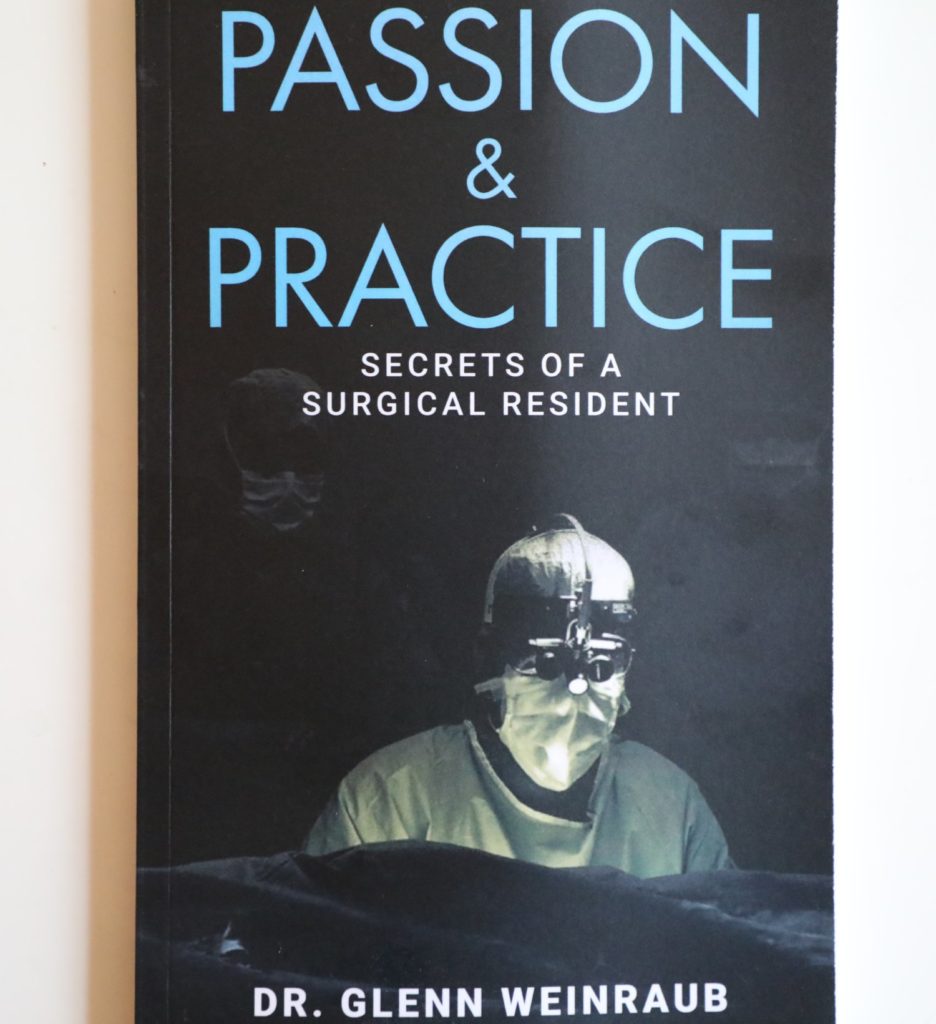
The absolute last page in this riveting read mentions a visit to Napa Valley including to The Vineyardist. The author mentions his highlight of his trip to Napa Valley was, “our private tasting at the Vineyardist Winery. The manager Julie took extra good care of us and was the most gracious host”. He refers to one of Napa Valley’s most cherished and loved hosts, Julie Stenger Elkeshen who was the Estate and Hospitality Director at The Vineyardist for 6 years.






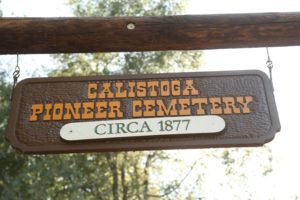



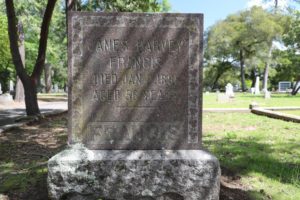
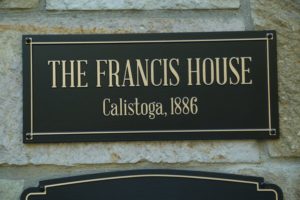

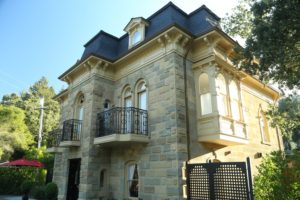

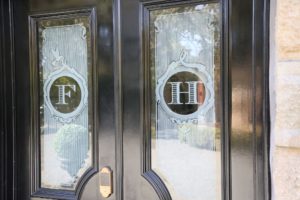

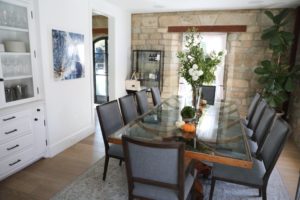

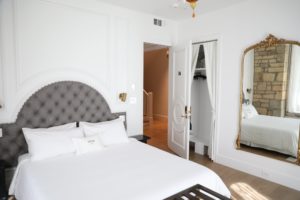
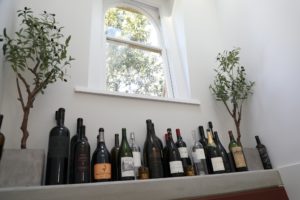
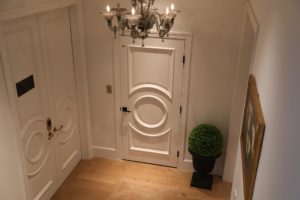
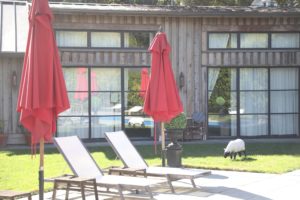
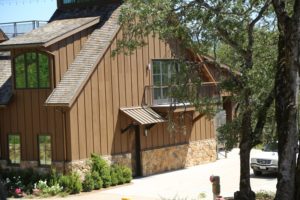

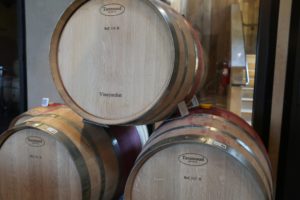
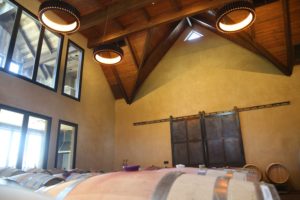

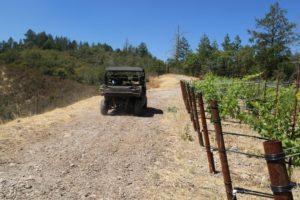
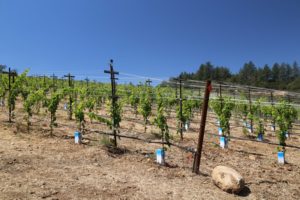
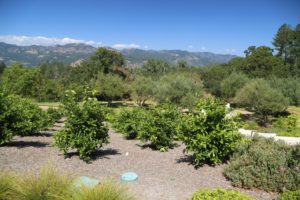
Hi Dave,
I found your article especially interesting. I’m a direct descendant of Lorenz Peterson. We always had a watercolor of Calarcadia in our home as I was growing up, and I have one myself. I’ve searched for information online before, but with no success. I’m thrilled that the house is in such fabulous shape. When I last saw it, as a teenager, in the 1980’s, it needed care. I was wondering if you had any other pictures of the interior of the house or garden?
Robin – thanks for realizing that this is not the winery website – and noticing that I’m the one that actually wrote this review! Most people think my reviews are the actual winery website.
I would love to talk to you about this history and your relation to Lorenz! I’m currently in the Tuamotos but will be back in Napa early October. I do have some other photos of the interior of the home from one of my earlier visits – I’ll see if i can find those when I return. I also know Julie who hosts tastings up at the winery and knows the property fairly well. I can connect you with her if you like. Best regards, Dave
Dave, if Robin in the note is the son of Bob and Barbara Lord previously in San Jose California please send this note to him. I am Bob Nelson who married Karen Petersen who is Barbara’s first cousin. They are the daughters of twins, a brother and a sister with Karen’s father being Raymond Petersen. If this is the Robin I think it is he will probably remember his cousin Ted Nelson when we lived in San Jose when kids.
My email address is krnelson63@charter.net
Thanks for your help
Bob Nelson
It was cool to recently see Dirk & Becky had also been to Le Dome in Bordeaux. Spotted their signature on the guest book 🙂